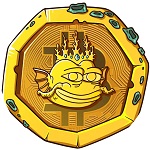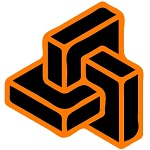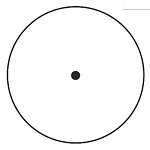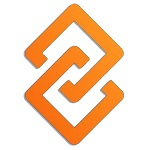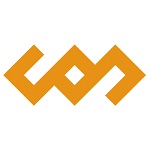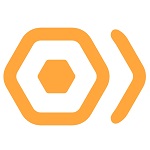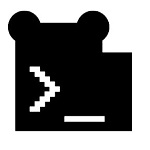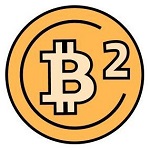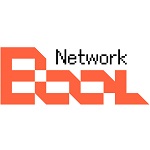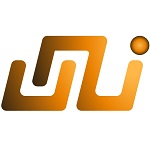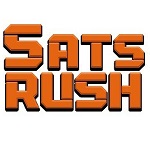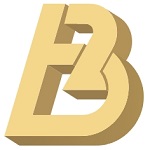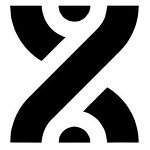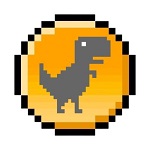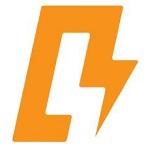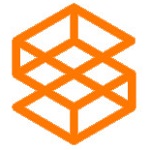Bitcoin Ecosystem
| Projects | Status | Date start | Raised | Launchpad | Ecosystem | X score | Interest lvl | Industry | ||
|---|---|---|---|---|---|---|---|---|---|---|
ICO Ongoing | May 06, 2025 | NFT +2 | ||||||||
ICO Pre-Sale | Jun 04, 2025 | Meme +1 | ||||||||
ICO Pre-Sale | Mar 10, 2025 | Finance +2 | ||||||||
| TBA | Mining +4 | |||||||||
ICO Past | May 27, 2025 | $1,5M | Blockchain +2 | |||||||
| TBA | $3M | Blockchain +3 | ||||||||
IDO Past | Apr 18, 2025 | DeFi +1 | ||||||||
| Apr 18, 2025 | $40M | Insurance | ||||||||
ICO IDO Past | Jun 06, 2025 | $24M | Finance +1 | |||||||
ICO | Jun 06, 2025 | DeFi +1 | ||||||||
| Jun 06, 2025 | $5M | Blockchain +3 | ||||||||
| Jun 06, 2025 | DeFi +3 | |||||||||
ICO | Jun 06, 2025 | Meme +2 | ||||||||
IDO Past | Apr 04, 2024 | $36,75M | Node | |||||||
| Apr 04, 2024 | $7M | DeFi +1 | ||||||||
| Apr 04, 2024 | Blockchain +1 | |||||||||
| Apr 04, 2024 | $11,05M | Gaming +6 | ||||||||
| Apr 04, 2024 | $102,75M | Crowdfunding & Lending +5 | ||||||||
ICO Past | Apr 04, 2024 | DEX | ||||||||
| Apr 04, 2024 | Blockchain +4 | |||||||||
IDO Past | Jan 08, 2025 | $6,7M | DeFi +2 | |||||||
IDO IEO Past | Nov 13, 2024 | Blockchain +4 | ||||||||
IEO IDO Past | Nov 04, 2024 | $10M | DeFi +1 | |||||||
| Nov 04, 2024 | Blockchain +4 | |||||||||
| Nov 04, 2024 | $610M | Mining +3 | ||||||||
| Nov 04, 2024 | $1,8M | Blockchain +1 | ||||||||
| Nov 04, 2024 | $1,7M | Finance +2 | ||||||||
IDO IEO Past | Mar 13, 2025 | $3M | Staking | |||||||
| Mar 13, 2025 | Crowdfunding & Lending | |||||||||
IDO | TBA | Blockchain | ||||||||
IDO Past | Feb 03, 2025 | Blockchain +1 | ||||||||
| Feb 03, 2025 | $2M | Blockchain | ||||||||
| Feb 03, 2025 | Gaming +1 | |||||||||
IEO Past | Aug 29, 2024 | Crowdfunding & Lending +3 | ||||||||
IDO | TBA | |||||||||
| TBA | $2M | Blockchain | ||||||||
IDO | Aug 19, 2024 | $0,77M | Gaming | |||||||
IDO Past | Jun 25, 2024 | |||||||||
IDO Past | Jun 18, 2024 | Crowdfunding & Lending +1 | ||||||||
| Jun 18, 2024 | Blockchain +1 | |||||||||
IEO Past | May 29, 2024 | $4,2M | Blockchain | |||||||
IDO | TBA | Exchanges & Wallets | ||||||||
IDO Past | Apr 25, 2024 | Layer-2 | ||||||||
| Apr 25, 2024 | $200M | |||||||||
IEO | TBA | $6M | DeFi | |||||||
IDO Past | Apr 08, 2024 | $1M | Gaming +1 | |||||||
IDO Past | Apr 03, 2024 | Layer-2 | ||||||||
IDO | TBA | Trading & Investing +2 | ||||||||
IEO Past | Mar 29, 2024 | $3,5M | Exchanges & Wallets +2 | |||||||
IDO Past | Jan 18, 2024 | Blockchain +1 | ||||||||
What is Bitcoin network
Bitcoin is a decentralized system that operates on a software protocol and is based on the principle of direct exchange between users.
Information about a new financial instrument – a cryptocurrency called Bitcoin – first appeared online in 2008. The creator of Bitcoin is one Satoshi Nakamoto, but that’s where the information about him ends. Presumably, Satoshi Nakamoto is not his real name, but a pseudonym. A man, a woman, or even a group of people can hide under it.
There is also an opinion that the emergence of Bitcoin was the reaction of a group of enthusiasts to the global economic crisis. The creators believed that it was the best way to overcome the rules of the game imposed by the existing financial system with its high level of corruption and numerous intermediaries. In their opinion, bitcoin will gain popularity in the future and will be a real competitor to traditional currencies.
Throughout the existence of BTC, the community and media have tried many times to establish the identity of Satoshi Nakamoto, but until now it remains a mystery.
Key mechanisms of Bitcoin blockchain
One of Bitcoin key innovations, at its inception, is an alternative, self-sufficient and decentralized open source payment system.
The main difference from traditional payment systems is that Bitcoin operates without the involvement of any regulatory body or central bank and the issuance of coins and transaction processing is done by the community.
Simply put, no one can block, cancel a transaction or delete Bitcoin. At the same time, anyone around the world can join the network and use it. Another real-world blockchain analogy is a book to which each new reader can add a page, but they are not allowed to modify or delete previous pages.
All transactions on the bitcoin network are recorded in a distributed data registry or public Blockchain, a copy of which is stored in a full node connected to the global bitcoin network. It is a database in the form of a continuous chain of blocks, each of which records transaction information. Also, the protocol uses Proof-of-Work (PoW) consensus to verify transactions and the correctness of their execution. PoW in blockchain is needed to verify the operations performed during block creation. The algorithm looks like this; a block is considered correct and is closed when its hash value is less than the record that miners are looking for. Simply put, the fidelity of a block demonstrates a particular cryptographic cipher. If its hash value is less than the record that miners are looking for. In other words, the fidelity of a block is indicated by a certain cryptographic cipher. At the same time, the function of controllers that check the block’s fidelity is performed by Nodes.
Let’s take a look at how transactions are performed in the Bitcoin blockchain.
Adding a new block is a transaction. And it is a way of processing information within the network. That is, a transaction can be related to the execution of some script or writing a note with data.
Each block contains a unique set of parameters: nonce, transfer amount in BTC, hash of the previous block, hash of the current block and a list of transactions. In addition, one block can contain thousands of records, and after the memory of the block is filled, it is closed, checked by miners, signed and moved to the next block in Hash format.
Notably, entries in blocks can be edited as long as they are open and the compressed content of the block carries over to the next one each time it is filled. However, trying to change a single character in previous blocks makes no sense.
Why? Because, all the data stored on the new blocks will be different, which means that the corrections will not reach the next user (block). Also, even if a lot of people edit something on the network, millions of computers (Bitcoin miners and users) will prevent them from doing so.
As we can see, Bitcoin actually performs the functions of traditional currencies. For example, to pay for services or purchases in stores, including online stores. In this case, even the simplest operation, technically significantly different from the transfer of fiat funds.
It can now be said that Bitcoin, especially its key Blockchain technology, is revolutionizing various industries; payment services, financial and government services, banking, healthcare, internet of things, logistics and transportation, energy, intellectual property management and many more. However, the main area of application of Bitcoin technology is the crypto industry, because thanks to Blockchain mechanisms it became possible to issue cryptocurrencies, which are in fact, “private money”. And Bitcoin has become one of the global means of payment that goes far beyond its original purpose.
Advantages of Bitcoin
- Concept of blockchain technology
- Decentralized model
- Open Source
- More secure transactions and transfers
- Transparent registry with public information
- Direct transfers as P2P
- Lower transfer fees
- Accessibility
- Increased transaction speed (not always, unfortunately)
Cryptocurrency BTC
Bitcoin is the first cryptocurrency, an analog of traditional currencies. The prefix “crypto” indicates that it was created with the help of cryptography, a science that, among other things, deals with the study of privacy methods.
BTC provides security, transparency, allowing people to make transactions. In addition, BTC acts as an incentive for users, validators and miners who receive rewards in BTC cryptocurrency.
Conclusion
As we can see, Bitcoin became the first instrument of a revolutionary class of finance – cryptocurrencies and its creator actually proved that people do not have to cooperate with banks to conduct transactions with assets.
So, it turns out that cryptocurrency in simple words is a new form of money, which emerged as a result of the evolution of the financial market. And after learning all about bitcoin, you can understand the principles of digital assets.


